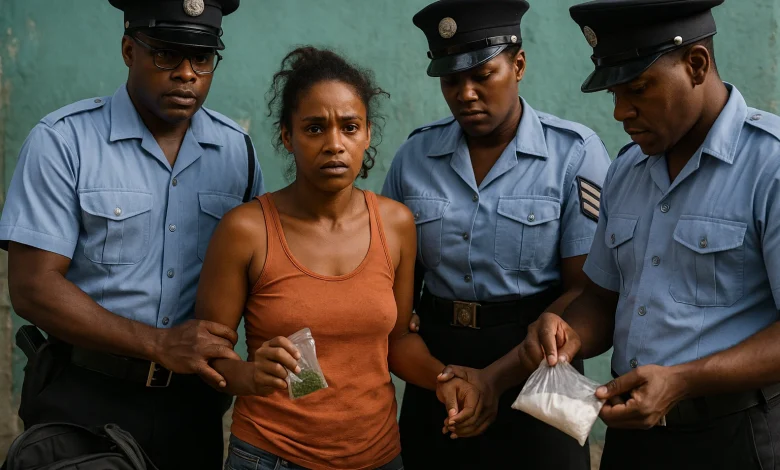Narcotics in Dominica: Trafficking and Trade

Narcotics in Dominica encompass two main dynamics: it is a minor domestic consumption market and an emerging transit zone for illicit drug flows, particularly cocaine and cannabis, moving from South America toward Europe or North America. While Dominica does not register the volumes seen in larger Caribbean jurisdictions, its geography, steep coastline, remote coves and limited maritime surveillance make it vulnerable to trans-shipment operations, temporary storage, and small-scale cultivation in hidden mountainous areas.
Historical Evolution of Drug Flows
In the 1990s and early 2000s, Dominica was viewed as a minor producer and chiefly a consumer locale for cannabis, with occasional seizures of imported cocaine. Over time, regional production and trafficking dynamics shifted: Venezuelan fishing vessels increasingly off-load cocaine to smaller craft near Dominica’s waters, which then bring the cargo to the island for onward movement to the French Caribbean or Europe. Meanwhile, voluntary cultivation of cannabis in remote terrain has persisted; however, most of that output remains for local use. The shift toward transit-function means that enforcement strategies must pivot from solely domestic consumption control to include maritime intelligence, asset tracing and regional intelligence sharing.
Key Seizures, Operations & Case Studies
From the information collected through official records and enforcement updates, the following seizures and operations provide a measured picture of how authorities are addressing narcotics trafficking in Dominica.
- Some shipments destined for Guadeloupe or Martinique traverse Dominica via transfer from Venezuelan vessels.
- A report by the Organisation of American States (OAS) noted that during 2008-2009 the Drug Information Network in Dominica recorded 74 persons charged for cocaine possession, and 92 seizures of illicit drugs in total during that period. These emphasize the link between trafficking and immediate enforcement rather than long-term data publication.
- While not a large scale synthetic-drug market, the OAS report indicates that synthetic-drug seizures remain minimal, and there is “no evidence of heroin consumption or trafficking” in Dominica as of its reporting period.
Figures, Data & Numbers
- The youth prevalence survey presented in UNICEF’s Situation Analysis of Children in Dominica shows lifetime marijuana use among school-attending adolescents rising by approximately 11 % between 2006 and 2010.
- The OAS / CICAD report presents that among 12 Caribbean nations, Dominica’s lifetime prevalence for cigarette use was 30.69%, past-year use 13.22%, and past-month use 7.76% for the survey period.
- A 2018 report from the Dominica Alcohol & Drug Information Network recorded 248,660.52 grams of cannabis seized during its reporting period (alongside lesser amounts of other substances).
- According to the UNODC database, annual narcotics-seizure data for Dominica is available under “Annual Drug Seizures.
- Despite some data availability, the OAS 2023 evaluation found that Dominica does not have standardized indicators for collection on illicit crop cultivation, precursor chemicals, or drug-market price/purity, denoting key gaps in data.
Current enforcement records highlight narcotics activity on the island, but full quantitative clarity is absent, particularly with respect to synthetic drugs and cross-border shipments.
Domestic Consumption Trends and Risks
Cannabis remains by far the most prevalent illicit drug for domestic consumption in Dominica. Reports suggest experimentation among high-schoolers is higher than regional averages. The transition of cannabis from consumption toward export (especially to Guadeloupe and Martinique) complicates detection and interdiction. Youth risk factors, such as substance use alongside other risky behaviours, pose long-term public-health and social-policy concerns.
Regional Cooperation & Enforcement Response
Dominica’s response to its narcotics challenge includes coordination via regional bodies such as the Regional Security System (RSS), maritime-surveillance partnerships and intelligence sharing with France’s overseas departments and the United States. As Dominica functions partly as a traffic-node rather than final destination, enforcement must emphasise vessel-tracking, rapid response to transfers, asset-seizure capacity, and targeting of financial flows. Legislative tools such as the Proceeds of Crime Act and mutual-assistance treaties provide frameworks for such actions.
Challenges & Drivers
Key factors contributing to Dominica’s vulnerability include its geographic location on trans-Atlantic maritime routes, rugged coastline with hidden coves, limited national enforcement resources, and relatively weak data-collection systems. The OAS evaluation flags Dominica’s lack of training, standardized data indicators and early-warning systems for new psychoactive substances. The island’s domestic consumption culture of cannabis further complicates the dual role of transit and local market.
For Dominica to strengthen its narcotics-control architecture, priorities include: upgrading maritime-surveillance capabilities, improving intelligence-sharing mechanisms, developing comprehensive data-monitoring frameworks, enhancing youth prevention programmes and investing in asset-seizure and forfeiture systems. Over time, enriching the transparency of trafficking-volume data will help shape targeted policies and reinforce Dominica’s resilience to transnational drug trafficking networks.




